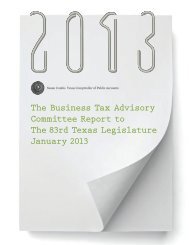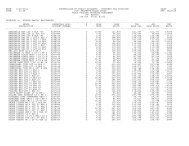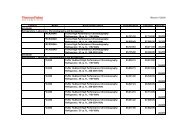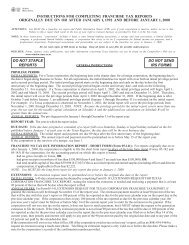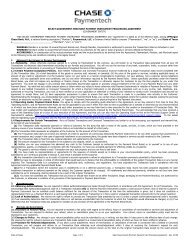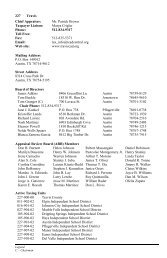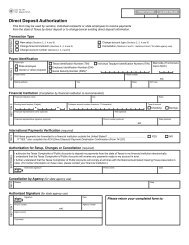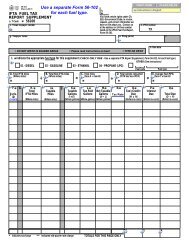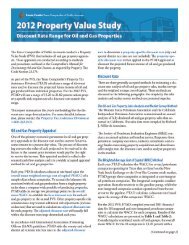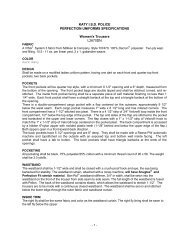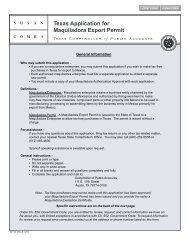Contracts Management Guide - Texas Comptroller of Public Accounts
Contracts Management Guide - Texas Comptroller of Public Accounts
Contracts Management Guide - Texas Comptroller of Public Accounts
You also want an ePaper? Increase the reach of your titles
YUMPU automatically turns print PDFs into web optimized ePapers that Google loves.
importance <strong>of</strong> the contract to the contractor, as well as provide the opportunity to enhance communications with the<br />
contractor.<br />
To perform a site visit, the agency should:<br />
A. Develop a comprehensive and objective monitoring checklist which:<br />
• Focuses on the outcomes, but also includes compliance requirements. Monitoring criteria should<br />
reference the applicable contract requirement.<br />
• Assess contractor performance the same way. Are any errors considered minor or inconsequential? If<br />
so, these must be outlined up front so that the contract is monitored consistently. Clarify areas where<br />
monitors may exercise judgment.<br />
• Specify the sample size to be reviewed, but do not disclose specifics to the contractor. For example,<br />
an agency may state that they will review case documents for the month <strong>of</strong> August, but they should<br />
not disclose that they will be reviewing case #XXX.<br />
B. Documentation Requirements:<br />
• Allow space on the checklist (or on a separate document) to document the results <strong>of</strong> the site visit. For<br />
example, if the monitor is to review 10 case files, then the documentation must include the<br />
identification <strong>of</strong> the files reviewed, e.g. the case number, the staff members tested for salary<br />
allocations, the expenditures reviewed.<br />
• Describe the documentation required for a monitor to bypass an area <strong>of</strong> monitoring, i.e. “No<br />
problems identified last year with the compliance requirement - not monitored this year.” This allows<br />
agencies more time to monitor higher risk areas.<br />
C. Sampling and Population<br />
• Ensure the population is complete by including all files relevant to the contract. The contractor<br />
should never be the one to select the samples for review.<br />
• If the contractor submits the names <strong>of</strong> the clients as part <strong>of</strong> the normal expenditure draw, then the<br />
sample can be selected from the client list. Ensure that the clients on the list are paid for by the<br />
agency.<br />
• If the contractor cannot locate the sample item selected, it may or may not indicate a problem. Before<br />
agreeing to substitute an alternate file, consider the circumstances <strong>of</strong> the “lost” sample item and<br />
determine if the explanation is reasonable or if the monitor suspects that the contractor did not want<br />
the monitor to see the file.<br />
The State Auditors Office <strong>of</strong>fers a Statistical Toolbox (http://www.sao.state.tx.us/resources/tools/default.cfm) which<br />
includes helpful tools for statistical sampling.<br />
D. Tailor the monitoring checklist for each contractor. While there will be standard items that the agency will<br />
review for all contractors, each contract/contractor should be reviewed for specific monitoring requirements<br />
unique to that contract/contractor. In addition, consider the following:<br />
• Review specific contract requirements to determine if they merit monitoring.<br />
• Look for items that fall just below an amount that would require additional approval.<br />
65



